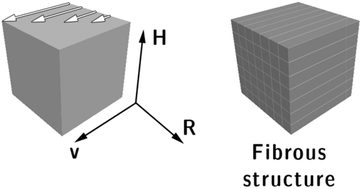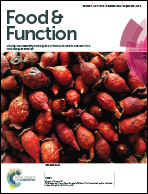On characterization of anisotropic plant protein structures
Abstract
In this paper, a set of complementary techniques was used to characterize surface and bulk structures of an anisotropic Soy Protein Isolate (SPI)–vital wheat gluten blend after it was subjected to heat and simple shear flow in a Couette Cell. The structured biopolymer blend can form a basis for a meat replacer. Light microscopy and scanning electron microscopy provided a detailed view of structure formation over the visible surfaces of the SPI–gluten blend. Protein orientation in the direction of the flow was evident and fibrous formation appeared to exist on the macro- and micro-scale. Furthermore, according to texture analysis, the structured biopolymer obtained from the Couette Cell after processing at 95 °C and 30 RPM for 15 min has high tensile stress and strain anisotropy indices (∼2 and ∼1.8, respectively), comparable to those of raw meat (beef). The novel element in this work is the use of the neutron refraction method, utilizing spin-echo small angle neutron scattering (SESANS), to provide a look inside the anisotropic biopolymer blend complementing the characterization provided by the standard techniques above. With SESANS, it is possible to quantify the number of fibre layers and the orientation distribution of fibres. For a specimen thickness of 5 mm, the obtained number of fibre layers was 36 ± 4 and the standard deviation of the orientation distribution was 0.66 ± 0.04 radians. The calculated thickness of one layer of fibres was 138 μm, in line with SEM inspection.


 Please wait while we load your content...
Please wait while we load your content...